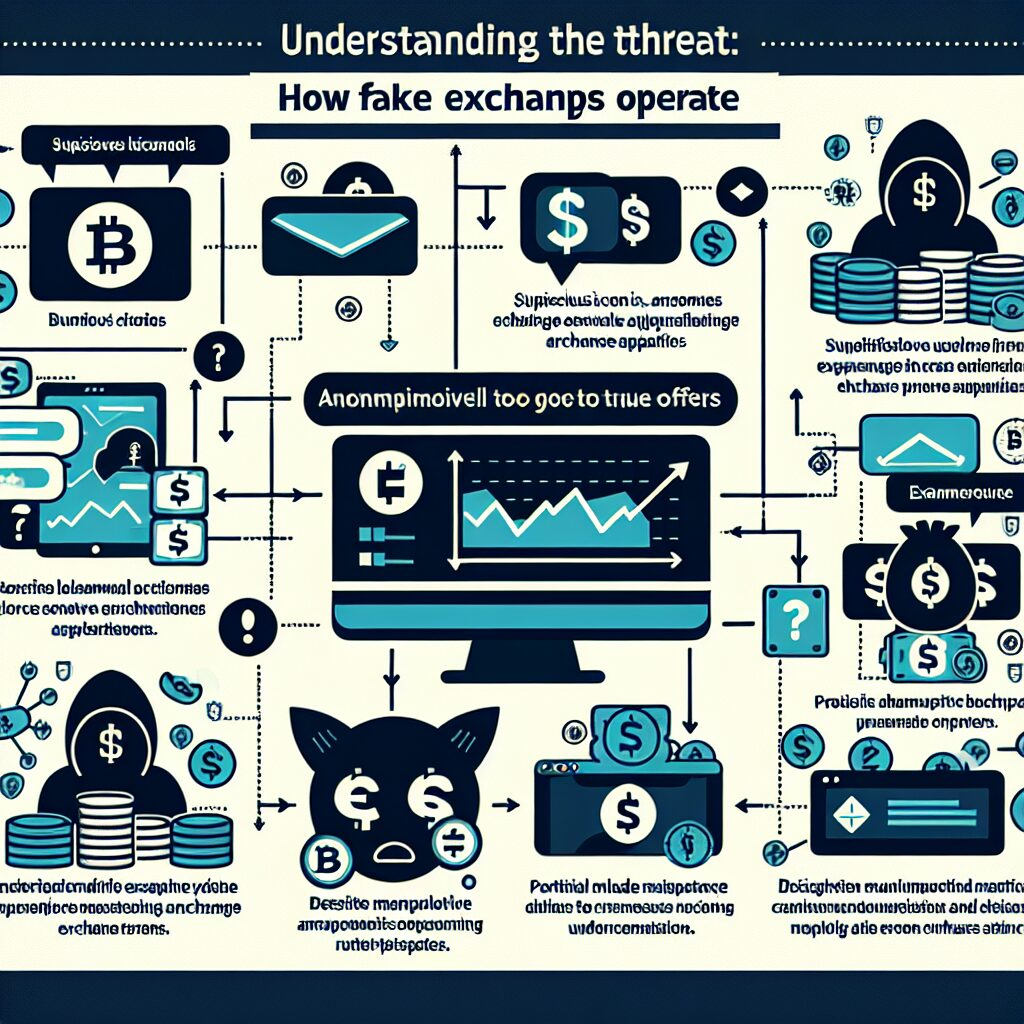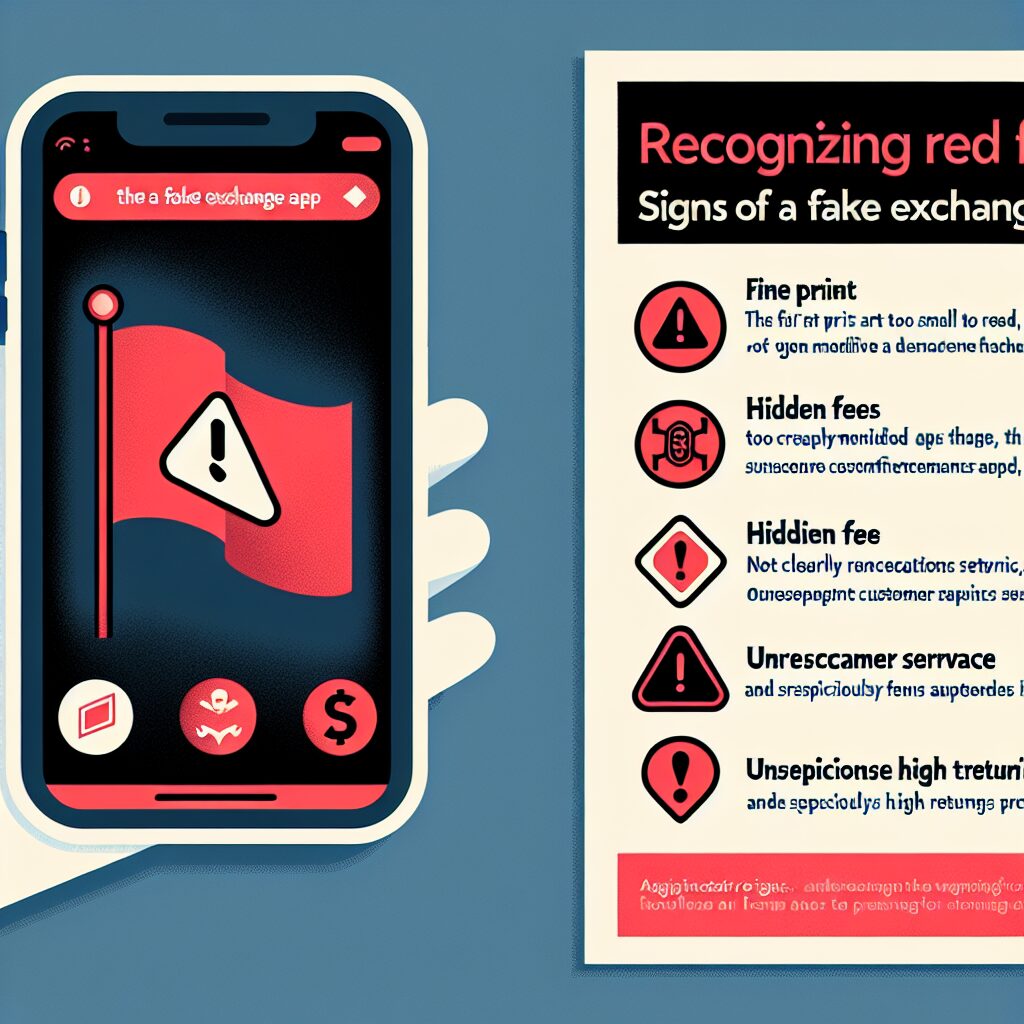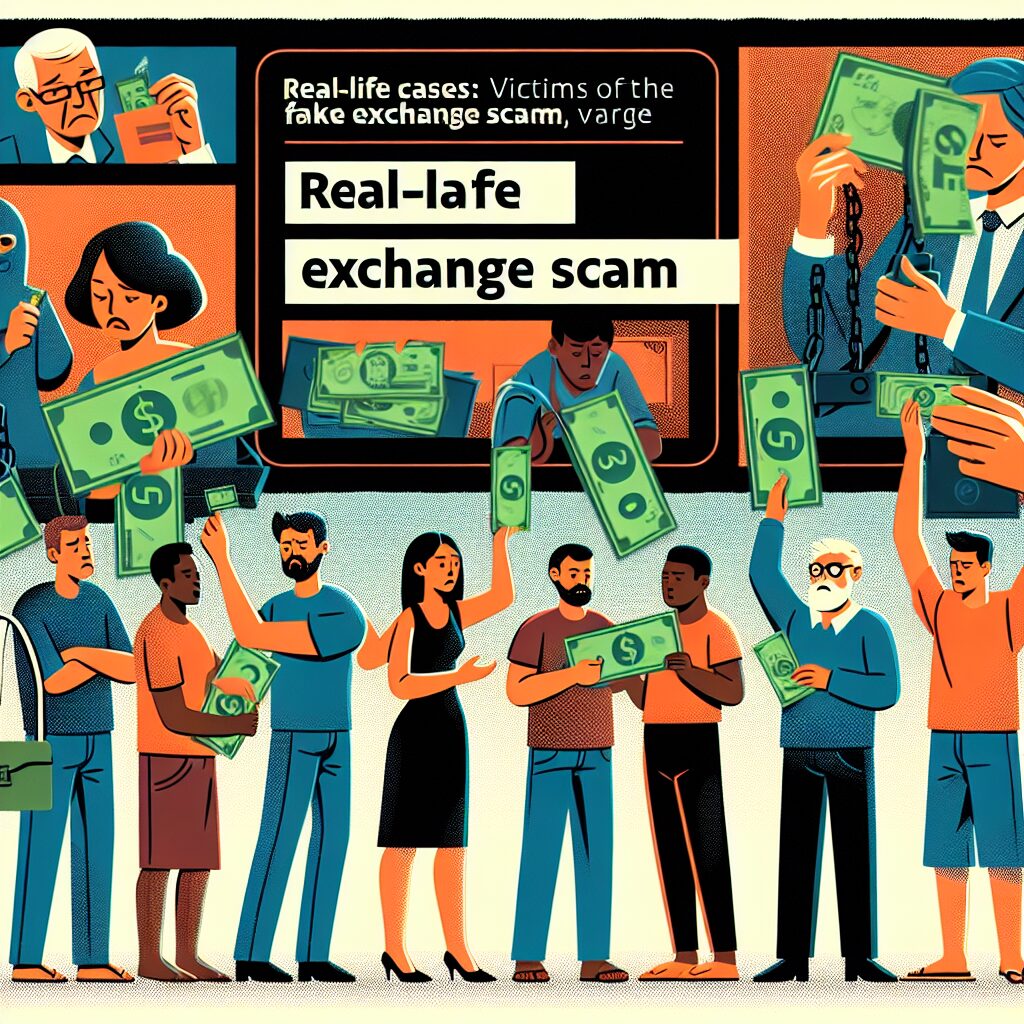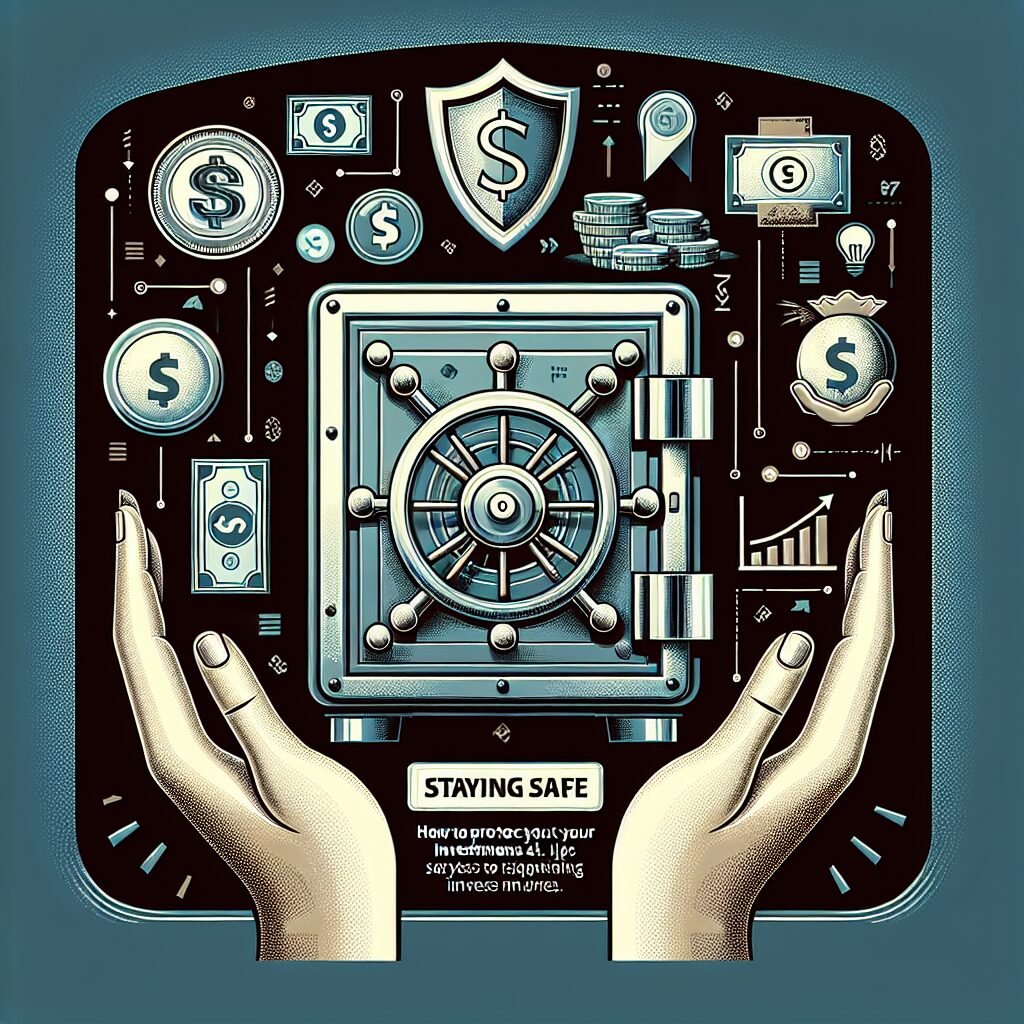– Understanding the Threat: How Fake Exchange Apps Operate

Fake exchange apps have become a significant threat to cryptocurrency users, as they are designed to mimic legitimate platforms, thereby deceiving users into downloading and using them, which ultimately leads to the unauthorized access and theft of their funds. These fraudulent applications often employ sophisticated techniques to replicate the interface and functionality of genuine exchange apps, making it difficult for users to distinguish between authentic and counterfeit versions, especially when they are distributed through unofficial channels or third-party websites. As these fake apps often request permissions that allow them access to sensitive information or control over the device, unsuspecting users may inadvertently grant access to their personal data, which can then be exploited by malicious actors to drain cryptocurrency wallets or compromise other financial accounts. Understanding how these fake exchange apps operate is crucial for users to protect themselves, as being aware of their tactics and strategies can help individuals recognize potential threats and avoid falling victim to these scams, which continue to evolve and pose a significant risk to the security of digital assets.
– Recognizing Red Flags: Signs of a Fake Exchange App

In today’s digital age, where financial transactions increasingly occur online, it is imperative to be vigilant and discerning when downloading applications, particularly those related to cryptocurrency exchanges, as malicious actors continue to develop sophisticated fake exchange apps designed to deceive and defraud unsuspecting users. Recognizing red flags is crucial in safeguarding your investments, and there are several key indicators that an app might not be legitimate. One significant warning sign is the presence of numerous spelling and grammatical errors within the app’s interface or promotional materials, which can indicate a lack of professionalism and authenticity often associated with fraudulent applications. Another critical red flag is the app’s request for excessive permissions that seem unnecessary for its stated functions, such as access to your contacts, messages, or other sensitive data, which can be exploited for malicious purposes. Furthermore, an app that lacks a verifiable history of user reviews or has overwhelmingly negative feedback should be approached with caution, as this can suggest that previous users have encountered issues or scams. Additionally, if an app offers deals or returns that seem too good to be true, it is essential to question its legitimacy, as scammers often lure victims with promises of unrealistic financial gains. By staying informed and exercising due diligence, users can better protect themselves from falling victim to these fraudulent schemes and ensure the security of their digital assets.
– Real-Life Cases: Victims of the Fake Exchange Scam

In recent times, numerous individuals have unfortunately fallen victim to the deceptive tactics employed by fake exchange apps, which have cunningly managed to infiltrate app stores and entice unsuspecting users with promises of lucrative investment opportunities and seamless trading experiences. These real-life cases highlight the devastating impact these scams can have on individuals who, in their quest to capitalize on the burgeoning cryptocurrency market, inadvertently download these fraudulent applications, only to find their hard-earned funds siphoned away by unscrupulous actors. Victims of these scams often report that the apps appear remarkably convincing, boasting professional-looking interfaces and even incorporating fake customer reviews and ratings to further legitimize their presence, thereby luring users into a false sense of security. Once users have deposited their funds into these counterfeit platforms, they quickly discover that their money is inaccessible, and any attempts to contact customer support or retrieve their investments are met with silence or evasive responses, leaving them feeling helpless and betrayed.
– How to Protect Your Investments: Tips for Staying Safe

When it comes to safeguarding your investments from the growing threat of fake exchange apps, it is crucial to adopt a proactive approach by implementing a series of precautionary measures designed to minimize risk and enhance security. First and foremost, always conduct thorough research on any exchange platform before downloading its app, ensuring that it is a legitimate and reputable entity by consulting reviews, checking regulatory compliance, and verifying its official website. Additionally, it is wise to enable two-factor authentication on your accounts, as this adds an extra layer of security by requiring a second form of verification beyond just a password, which can help protect against unauthorized access. Furthermore, be cautious about the permissions requested by the app during installation, as legitimate apps will typically only request access to necessary functions, whereas fraudulent ones might seek excessive permissions that could compromise your data. Keeping your device’s operating system and security software up to date is also essential, as these updates often include patches for vulnerabilities that could be exploited by malicious actors. By remaining vigilant and taking these protective steps, you can significantly reduce the likelihood of falling victim to scams, thereby ensuring that your investments remain secure and your financial future is safeguarded.
– Reporting and Recovery: Steps to Take if You're Targeted

If you find yourself targeted by a fake exchange app, it is crucial to act swiftly and methodically to mitigate potential losses and enhance the chances of recovering your funds. First, immediately contact your bank or financial institution to report the fraudulent activity, as they may be able to halt or reverse unauthorized transactions, providing you with some financial relief. Additionally, it is important to report the scam to your local law enforcement agency, as well as to relevant regulatory bodies, such as the Federal Trade Commission or the Securities and Exchange Commission, to help them track and combat fraudulent activities in the crypto space. Furthermore, consider reaching out to any online platforms or app stores where the fake exchange app was available, as they may take action to remove the app and prevent further downloads, thereby protecting other potential victims. Seeking guidance from legal professionals or financial advisors who specialize in cryptocurrency-related issues may also prove beneficial, as they can offer tailored advice and support in navigating the complex recovery process. By taking these steps, you not only increase your chances of recovering lost funds but also contribute to the broader effort of safeguarding the crypto community against such malicious threats.
– Future Outlook: Preventing Further Attacks in the Crypto Space

As the cryptocurrency landscape continues to evolve, the future outlook for preventing further attacks in the crypto space hinges on a multifaceted approach that combines technological advancements, user education, and collaborative efforts among industry stakeholders to create a more secure environment for all participants. Enhancing security measures through the implementation of advanced encryption technologies and robust authentication protocols is essential to safeguard user funds and personal information from malicious actors who exploit vulnerabilities in fake exchange apps. Moreover, fostering a culture of awareness by educating users about the potential risks and encouraging them to remain vigilant against suspicious activities can significantly reduce the likelihood of falling victim to such scams. Industry collaboration is also crucial, as sharing threat intelligence and best practices across platforms can help identify emerging threats more quickly and develop effective countermeasures. By taking these proactive steps and fostering a community of trust and transparency, the crypto industry can work towards minimizing the impact of fraudulent activities and ensuring a safer experience for all users.


